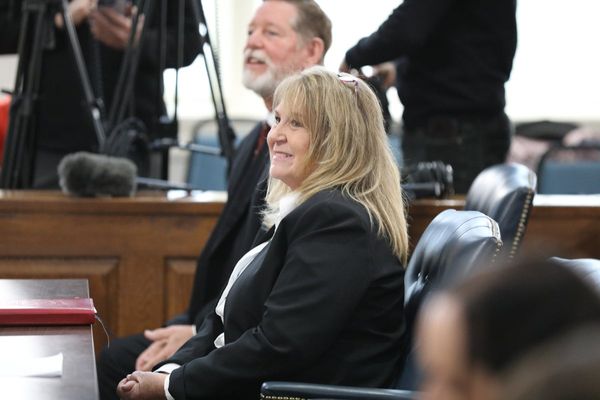
As details of the inquiry into Sunday’s violence at Jawaharlal Nehru University become available, the spotlight is firmly on the role of the Delhi police. One explanation that the police have given for their apparent inaction during the mob attack in the university is the flak they received after storming Jamia Millia Islamia University last month. Supposedly, after what happened in Jamia, they did not want to enter a campus without written permission from the administration. But is being wary to the point of inefficacy explanation enough, considering what the mob did?
There is evidence to indicate the Delhi police chose not to act against the mob. They didn’t enter the campus until 7.45 pm even though WhatsApp messages put out by India Today show JNU Students Union president Aishe Ghosh had alerted Vasant Kunj Station House Officer Ritu Raj, Inspector Sanjeev Mandal, and Special Commissioner of Police Anand Mohan to the violence as early as 3 pm on January 5.
Indeed, in their FIR filed the next day, the police concede that at around 3.45 pm, police personnel stationed near the university’s administration block were informed that some people were gathered near Periyar hostel, and they were assaulting students and damaging property. Getting there, the police personnel saw 40-50 unknown people, some of whom had covered their faces with mufflers and were armed with sticks, beating up students and vandalising hostel rooms. The police claim all the attackers escaped as soon as they saw the uniformed personnel approach.
Professor Atul Sood, of the School of Social Sciences, said he was at a protest meeting near Sabarmati hostel at around 4.30 pm when he saw two police vehicles drive by. According to a report by the Indian Express, the Deputy Commissioner of Police, Southwest, visited the campus between 5 pm to 5.15 pm. He returned to the main gate because the situation on the campus seemed “normal”. It wasn’t long afterwards, however, that Sood’s meeting was attacked by the masked mob. Stones were hurled, resulting in injuries to several people, including teachers.
At 6.24 pm, after violence had broken out, Vice Chancellor M Jagadesh Kumar messaged at least three top senior police officials. Strangely, instead of asking them to contain the violence quickly, Kumar said, “Considering the volatile situation in JNU campus, I request you to station police at the gates of JNU campus so that they can quickly reach the trouble spot in the campus if a law and order situation arises.” And unlike in Jamia, the police waited for the vice chancellor’s permission to enter the campus.
But even when permission came, at around 7.45 pm, the police remained silent spectators to the unfolding violence. They also did nothing when scores of ABVP supporters, including a good number of middle-aged men, started harassing journalists, students and ordinary people waiting outside the main gate, hurling abuses and forcing them to chant “Bharat Mata ki Jai”. They even assaulted India Today reporter Ashutosh Mishra as he was reporting live, calling him a “jihadist” and “Naxali”. Rohan Venkataramakrishnan of Scroll was surrounded by a mob as he tried to record a video on his phone, pushed around and hit on the head. He said several policemen were standing only a few metres away, but they didn’t intervene. Siddharth Ravi of the Hindu was gheraoed by masked men outside the campus. Ayush Tiwari of Newslaundry was told to chant “Bharat Mata ki Jai” by two men outside the gate. The very next moment, a policeman approached and told him, “Bhaag yahan se.” Go away.
Journalists beaten by goons at JNU gate. Our reporter confirm that it was @aajtak @IndiaToday journalist. All lights are off. Total chaos at #JNUViolence pic.twitter.com/9h60M0mKZp
— Atul Chaurasia (@BeechBazar) January 5, 2020
There were over a hundred police personnel at JNU on the night of the violence, yet not one assailant was arrested. Students who live on the campus were not allowed to enter even after showing their ID cards, but armed assailants freely entered and exited the campus, no questions asked by the police.
Five days on, the Delhi police identified nine people suspected of being involved in the JNU violence. They include Aishe Ghosh but, surprisingly, none from the masked mob that unleashed mayhem on the evening of January 5. Though the police were lauded on Twitter for their work, some people noted that they had misidentified one Shiv Mandal as the ABVP’s Vikas Patel.
Big blunder by Delhi Police, showing picture of Shiv Mandal as ABVP’s Vikas Patel in their Press conference on JNU violence. This is after their hard effort of 5 days long probe. https://t.co/EVAWVHnIxH
— ASHUTOSH MISHRA (@ashu3page) January 10, 2020
The police claim they are finding it hard to identify the masked attackers due to the absence of security footage, “authenticated” video recordings and witnesses. However, given there are multiple videos of the violence and corroborating eyewitnesses that poke holes in the police’s justification, their claim doesn’t fly.
Newslaundry is a reader-supported, ad-free, independent news outlet based out of New Delhi. Support their journalism, here.







